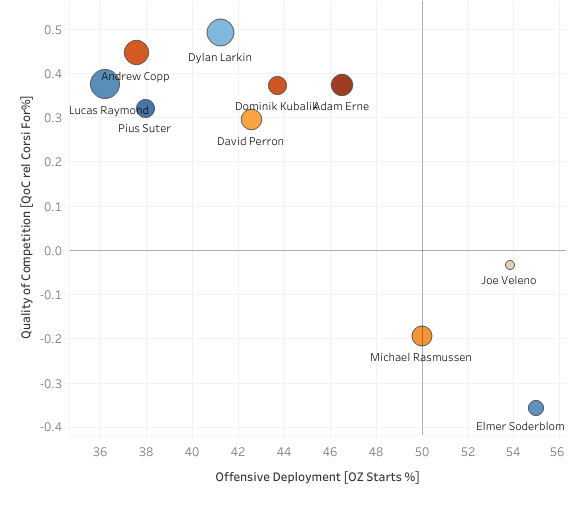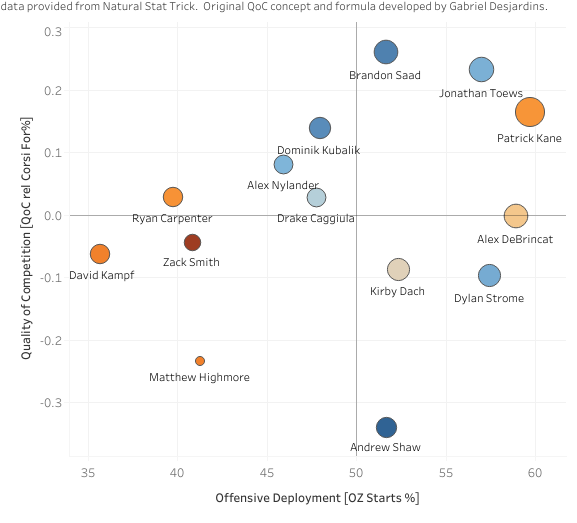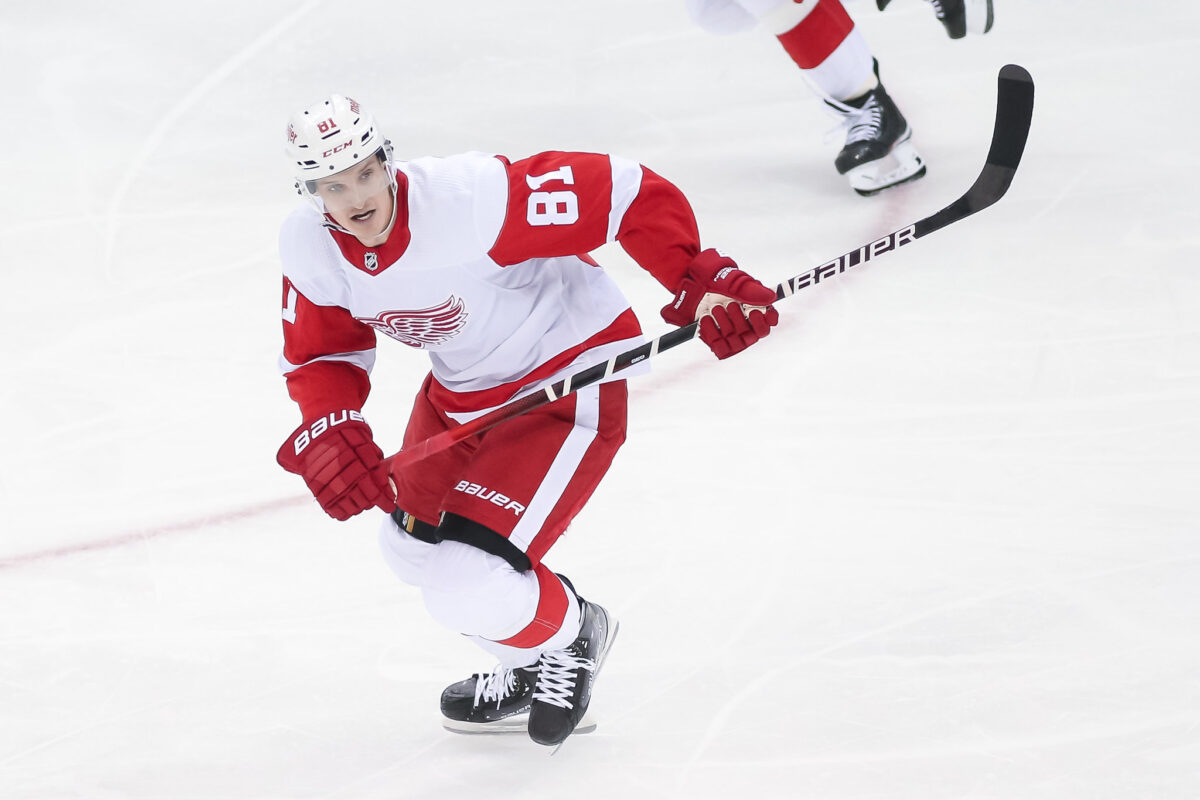When Steve Yzerman added Dominik Kubalik during this past offseason, I don’t think many people expected this kind of production from him this early in the season. There were some who predicted him to be a low-risk, high-reward acquisition, while others thought he could be a hidden gem for the Original Six franchise.
There is good reason to believe that Kubalik’s production is here to stay for the rest of the season, as some of the numbers we are seeing so far are similar to his rookie year in 2019-20. Let’s take a look at some of those metrics and stats.
Kubalik’s Sustainable Shooting
Kubalik is a shooter, averaging 2.7 shots on goal per game (SOG/G) so far this season. Over his three previous seasons, he has averaged 2.4 SOG/G. In his second year in the league, he shot 2.8 SOG/G, so his shot rates in 2022-23 are not out of the ordinary for what he has done in his career.
Related: Red Wings’ Soderblom Poised For A Breakout…Next Year
His shooting percentage (S%) tells a similar story — 18.8 percent this year, 19.1 percent in his rookie year. If we apply his S% to the 64 remaining games in the schedule, he would total 31 goals. Accounting for variance in S%, he should finish the year with 30-40 goals.
Corsi Now vs. Then
The biggest difference in Kubalik’s numbers from this year and his rookie season is his Corsi For Percentage (CF%). He had good numbers relative to his team, but 2022-23 tells a different story.

Amongst Red Wings forwards this season, Kubalik is the second worst in CF% at 41 percent. The entire team gets outshot on most nights, which explains why no forward has higher than a 50 CF%.
In the above chart, his bubble being brown tells us that he has one of the lowest Corsi for percentages in the forward group. The placement of the bubble to the left of the center line tells us he is starting less than 50 percent of his zone starts in the offensive zone. Additionally, his bubble being one of the highest tells us that he is facing a higher quality of competition relative to the rest of the team. That high quality of competition can explain the sub-50 CF%. Kubalik is not a defense-first player, so suppressing the opposition’s top players doesn’t happen often.

In the above visual Kubalik’s bubble is blue (high CF% relative to the rest of the forwards), a little lower (easier quality of competition), and slightly closer to the center (more offensive zone starts). Although this seems like an overall negative, there is more to his story.
Kubalik had a 51% Goals For Percentage (GF%) in his rookie season with the Chicago Blackhawks. Presently he sits at a 53 GF% for 2022-23. That increase is marginal but does reflect that he has a positive effect on the Red Wings’ scoring, even though they are usually out-shot when he is on the ice.
Kubalik Is Getting Prime Power-Play Opportunity
One of the biggest differences in stats from Kubalik’s rookie season compared to this year is the power play. In 19 games he has averaged 3:50 of powerplay time on ice (PPTOI). He averaged 2:12 in his three-year tenure with the Blackhawks. With that increase in PPTOI, an increase in power-play production has followed.

Kubalik presently has 10 power-play points this season. In the past three years, he had eight, 14, and nine power-play points. I believe we will see a career-high in power-play points once we reach the end of the 2022-23 season.
Individual points percentage on the power play is the percentage of on-ice goals scored on the power play where the player gets a goal or an assist. Examining Kubalik’s PPIPP over the last three years has been 72.7, 77.8, and 64.3. This season it is 76.9, in between his first two seasons’ PPIPP numbers. As long as the Red Wings maintain their powerplay effectiveness he should continue to gather points with the man advantage.
Kubalik’s Teammate Chemistry
The line of Kubalik, David Perron, and Dylan Larkin have six goals for and one goal against in 45 minutes of ice time together. Kubalik also has all ten of his powerplay points with Larkin and Perron on the ice. Moritz Seider is the common defenseman playing with that unit who recently connected with him for a fantastic one-timer goal:
Of his 11 even strength points, eight of them have been with both Larkin and Perron on the ice. That trio has contributed five of the team’s last 12 goals. The Kubalik-Perron-Andrew Copp trio accounts for another two of the last dozen scored by the Red Wings. Over half of the last 12 Red Wings goals have had Kubalik involved. That shows his desire and execution to be the straw that stirs the drink.
Kubalik is on track to reach the heights of his rookie season and become the high-reward asset that many believe he would be when he signed with the Red Wings in the offseason. With continued production on the powerplay and increasing chemistry with his teammates, we will see a career year from him in every statistical category.